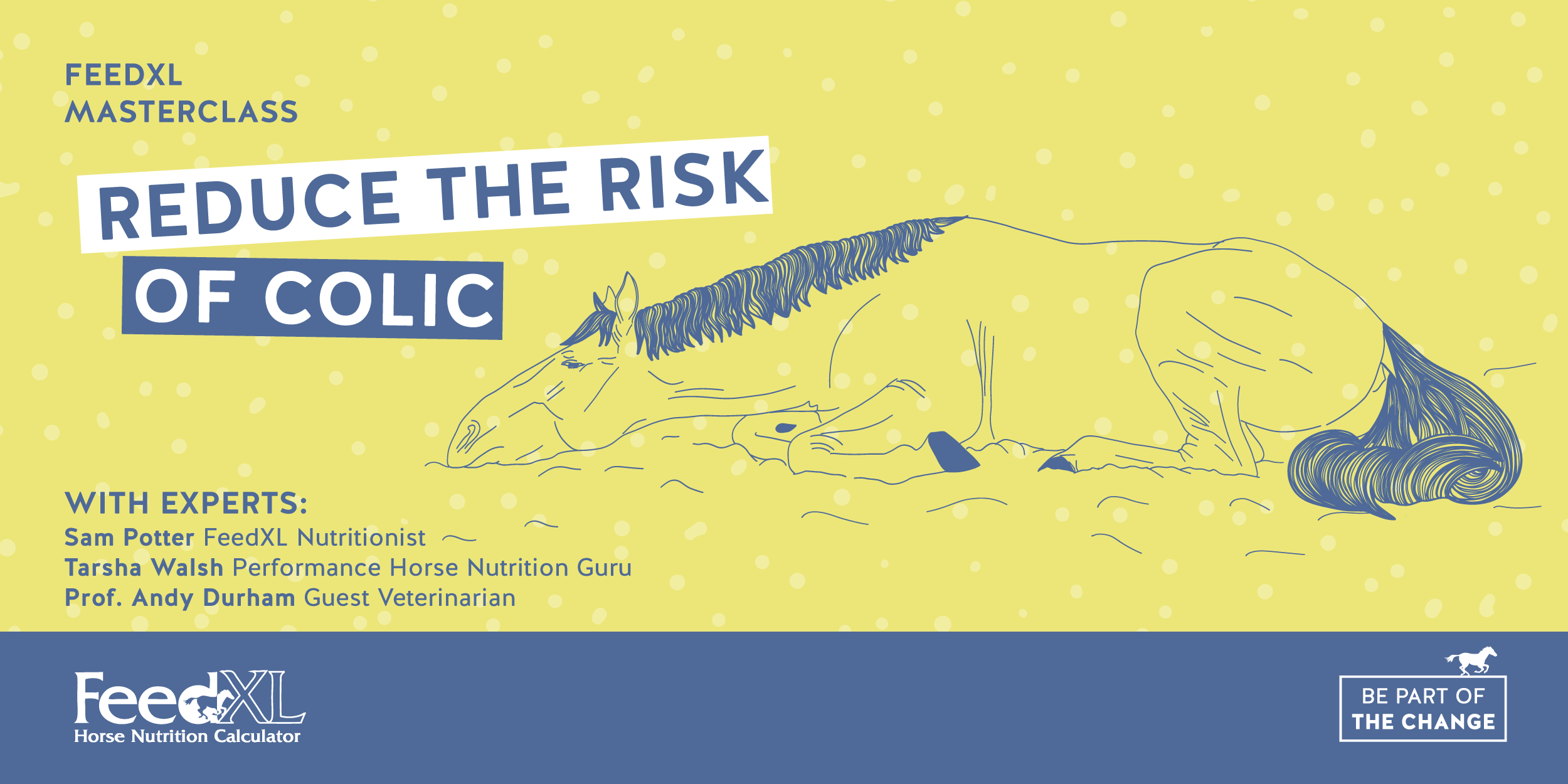FREE FEEDXL MASTERCLASS
A FREE Masterclass With Professor Andy Durham (veterinarian and world guru on colic) and FeedXL Nutritionist Sam Potter
You will learn…
✔️ What is colic?
✔️What are the different types of colic?
✔️ What are the causes and risk factors of colic?
✔️ What to do if I think my horse has colic?
✔️ How to MANAGE my horse post colic surgery?
✔️ How can I REDUCE THE RISK of my horse getting colic?
COLIC! It’s a word that sends cold shivers up every horse owner’s spine, and for good reason.
It’s not 100% preventable but the good news is, with some minor tweaks in feeding and management you can drastically reduce your horse’s risk of COLIC.
We want to invite you to watch our Masterclass to learn more about colic, and specifically what you can do to prevent it!
Meet Prof Andy Durham
Dr Andy Durham BSc BVSc CertEP DEIM DipECEIM MRCVS
RCVS and European Specialist in Equine Internal Medicine
Andy qualified from the University of Bristol in 1988 and worked initially in the Midlands where he gained a postgraduate qualification in Equine Practice. He gained the RCVS Diploma of Equine Internal Medicine in 2003 and the Diploma of the European College of Equine Internal Medicine the following year. Andy acts as a consultant at Liphook Equine Hospital for internal medicine providing a referral service for referring vets and has a particular interest in equine metabolic syndrome, liver disease and ophthalmology. Andy has published extensively on a wide range of equine medicine subjects and lectures frequently both in the UK and abroad. In addition to his role as medicine consultant, he runs the diagnostic laboratory within the hospital which provides rapid analysis and interpretation of results of samples from within the practice, referral hospital and those sent in by referring veterinary surgeons.
Meet FeedXL Nutritionist Sam Potter
Bachelor of Equine Studies (Hons), Master of Philosophy in Veterinary Science (Equine Nutrition)
In 2009, Sam completed a Bachelor of Equine Studies and it was during this time she developed an interest in equine nutrition. Pursuing this passion, Sam went on to complete her Honours followed by her Masters degree in equine nutrition at The University of Melbourne. Both these research-based degrees focused on methods for measuring obesity in horses and ponies, development of novel methods for measuring obesity and identifying the incidence of obesity in Australian pleasure horses.
